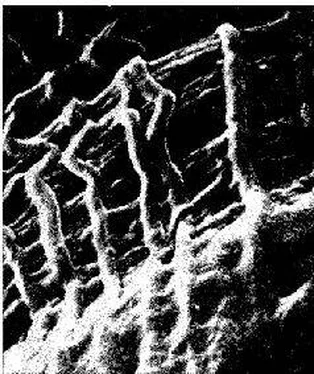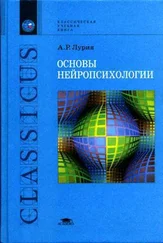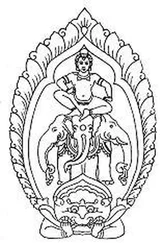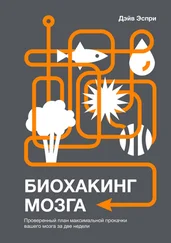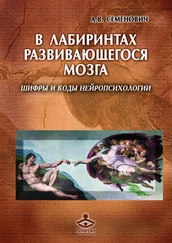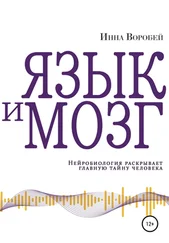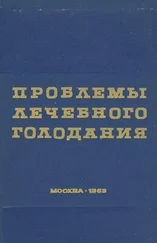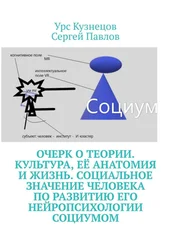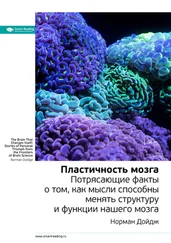Д. Бом из Лондонского университета недавно тщательно проанализировал современные парадоксы и проблемы, связанные с теорией относительности и квантовой физикой. Он высказал мысль, что эти противоречия возникли от того, что наши представления об организации наблюдаемых явлений в значительной мере зависят от тех аппаратов, с помощью которых осуществляется наше восприятие. Парадоксы возникли тогда, когда стала применяться такая аппаратура, как интерферометры (анализаторы пространственной частоты). Следовательно, можно думать, что голография и является концепцией, которая поможет существенно углубить наши знания.
Таким образом, ученые приходят к мысли о том, что внешний мир построен по голографическому и структурному принципам, подобно тому, как мы пришли в этой книге к выводу о голографической и структурной организации нервной системы… Следовательно, Кёлер был прав, предполагая, что между моэгой и другими физическими устройствами существует известный изоморфизм. Однако он еще не был в состоянии раскрыть те законы, которые дают возможность как психологу, так и физику обеспечить описание единой структуры мира.
7. Как отмечалось в эпилоге, путешествие, описанное в книге г еще не закончено. Я верю, что рубеж, который мы называем проблемой сознание – мозг – поведение, будет перейден и перед. нами предстанет новая удивительная картина мира. Я напоминаю моим советским коллегам, как много они должны сделать, чтобы продолжить этот путь и указать его направление. Я ненахожу слов, чтобы описать радость, которую принесло наше сотрудничество, и хочу еще раз выразить моим советским коллегам свою глубокую благодарность.
Февраль 1974 г .
© «Прогресс», 1974
Adams R. The anatomy of memory mechanisms in the human brain. Br Talland G. A. and Waugh N. С (eds.). The Pathology of Memory. New-York, Academic, 1969, p. 91-106.
A d e у W. R. Intrinsic organization of cerebral tissue in alerting, orienting», and discriminative responses. In: Quarton G. C., Melnechuk T. and Schmitt F. 0. (eds.). The Neurosciences. New York, The Rockefellar Press, 1967, p. 615-633.
A d о 1 p h E. F. Physiological Regulations. Lancaster, Pa., Jacgues Cattell. Press, 1943.
Adolph E. F. Thirst and its inhibition in the stomach. Amer 1. Physiol. 1950. 161, 374-386.
Adrian E. D. and Matthews B. The action of light on the eye. Part 1. The discharges of impulses in the optic nerve and its relation to the-electric change in the retina. /. Physiol., 1927a, 63, 378-414.
Adrian E. D. and Matthews B. The action of light on the eye. Part 1Г. The processes involved in retinal excitation. /. Physiol., 1927b. 64 r179-301.
Adrian E. D. and Zotterman Y. The impulses produced by sensory nerve-endings. Part II. The response of a single end-organ. /. Physiol. 1926, 61. 151-171.
Agranoff B. W., Davis R. E. and Brink J. J. Memory fixation in the-goldfish. Proc. Nat. Acad.Sti., 1965, 54, 788-793.
A1 b ё-F e s s a r d D. Activites de projection et d'association du neocortex cerebral des mammiferes, Extrait du Journal de Physiologie, 1957, 49› 521-588.
A m s e 1 A . The role of frustrative nonreward in noncontinuous reward situations. Psychol. Bull., 1958, 55, 102-118.
A n a n d В. К. Influence of the internal environment on the nervous regulation of alimentary behavior. B. Brazier M. A. B. (ed.). Brain and Behavior. Vol. II. Washington, D. C., American Institute of Biological Sciences, 1963, p. 43-116.
A n a n d В. К. and Brobeck J. R. Localization of a «feeding center» in the hypothalamus of the rat. Proc. Soc. Exp. Biol. Med., 1951, 77, 323-324.
A n a n d В. К. and Brobeck J. R. Food intake and spontaneous activity ol rats with lesions in the amygdaloid nuclei. /. Neurophysiol., 1952, 15, 421-430.
Andersson B. The effect of injections of hypertonic NaCl-solution into the different parts of the hypothalamus of goats. Acta Physiologica Scand., 1953, 28, 188-201.
A n g e v i n e J. В., M a n с a 11 E. L. and Yakovlev P. I. The Human Cerebellum. An Atlas of Gross Topography in Serial Sections. Boston, Little, Brown ‹ amp; Company, 1961.
Ash by W. R. Design for a Brain: The Origin of Adaptive Behaviour. New York, John Wiley, 1960.
Attneave F. Some informational aspects of visual perception. Psychol. Rev., 1954, 61, 183-193.
А у e r A. J. Language, Truth and Logic. New York, Dover, 1946.
Bagshaw M. H. and Benzies S. Multiple measures of the orienting reaction and their dissociation after amygdalectomy in monkeys. Exp. Neurol., 1968, 20, 175-187.
Bagshaw M. H. and Coppock H. W. Galvanic skin response conditioning deficit in amygdalectomized monkeys. Exp. Neurol., 1968, 20, 188-196.
Bagshaw M. H7, KimbleD.P. and P r i b r a m К. Н. The GSR of monkeys during orienting and habituation and after ablation of the amygdala, hippocampus and inferotemporal cortex. Neuropsychologic 1965, 3, 111-119.
Bagshaw M. H., Mackworth N. H. and Pribram К. Н. Method for recording and analyzing visual fixations in the unrestrained monkey. Perceptual and Motor Skills, 1970a, 31, 219-222.
Bagshaw M. H., Mackworth N. H. and Pribram К. Н. The effect of inferotemporal cortex ablations on eye movements of monkeys during discrimination training. Int. J. Neuroscien.ee, 1970b, 1, 153-158.
Bagshaw M. H. and Pribram J. D. Effect of amygdalectomy on stimulus threshold of the monkey. Exp. Neurol, 1968, 20, 197-202.
Bagshaw M. H. and Pribram К. Н. Effect of amygdalectomy on transfer of training in monkeys. L. сотр. physiol. Psychol., 1965, 59, 118-121.
Bailey P. Intracranial Tumors. Springfield, III, Charles С Thomas, 1933.
Bailey P., von Benin G. and McCulloch W. S. The Isocortex of the Chimpanzee. Urbana, University of Illinois Press, 1950. Barlow H. B. Possible principles underlying the transformations of sensory messages. B: Rosenblith W. (ed.). Sensory Communication. Cambridge, MIT Press, 1961, p. 217-234.
Barrett T. W. The cortex as interferometer: the transmission of amplitude, frequency and phase in cerebral cortex. Neuropsychologia, 1969a, 7, 135-148.
В a r re 11 T. W. Studies of the function of the amygdaloid complex in Macaca mulatta. Neuropsychologia, 1969b, 7, 1-12.
Batham E. J. and P a n t i n C. F. A. Inherent activity in the sea anemone. /. Exp. Psychol., 1950, 27, 290-301.
Читать дальше
